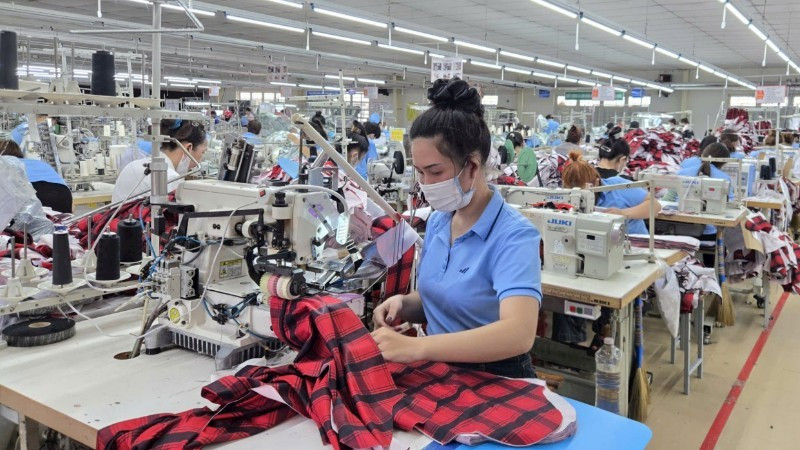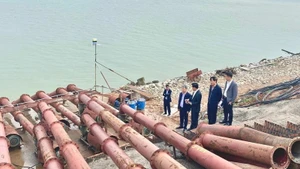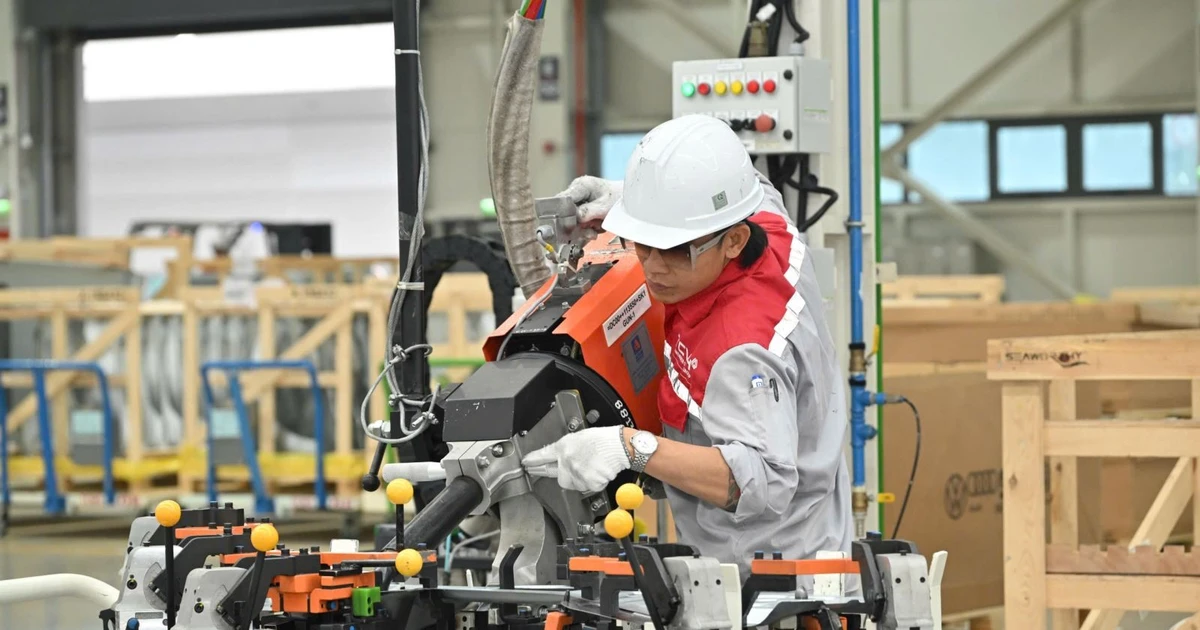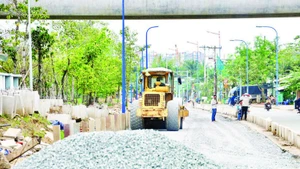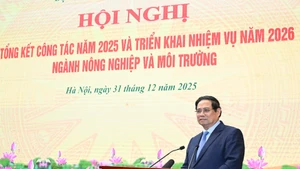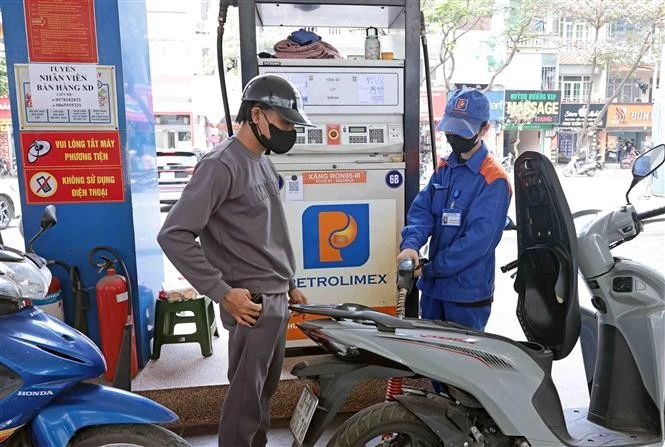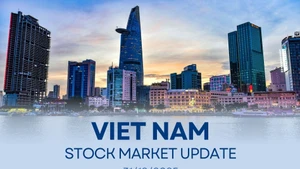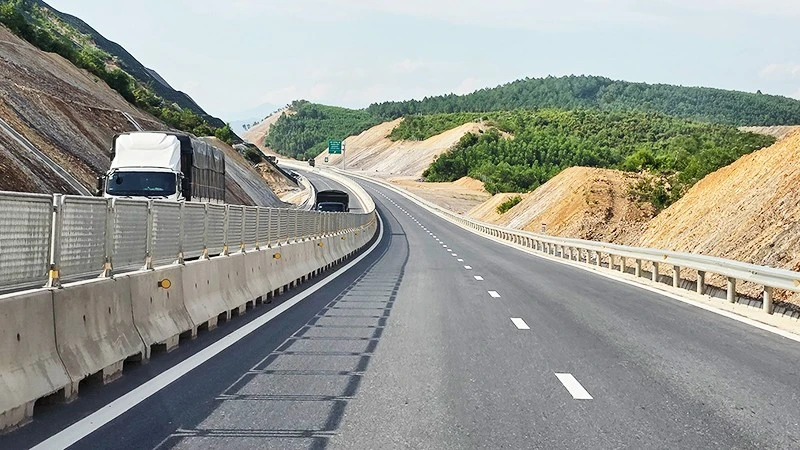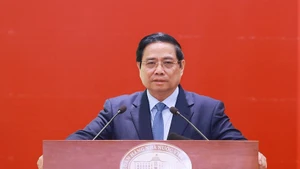However, dependence on a few main export markets, low localisation rates of raw materials, and an inconsistent legal system also make it difficult for many enterprises to adapt, thereby failing to fully meet new external market requirements.
Pressure for renewal
According to the Viet Nam Chamber of Commerce and Industry (VCCI), Vietnamese enterprises currently face many challenges both at home and abroad. Consumer demand has fallen in major economies and logistics costs have surged, while non-tariff barriers in the US and EU are becoming increasingly stringent, forcing enterprises to strictly comply with environmental, social and governance standards.
In the first seven months of 2025, as many as 144,000 enterprises withdrew from the market nationwide, up 15.1% year on year, averaging more than 20,000 businesses ceasing operations each month, indicating mounting competitive pressure. In this context, if enterprises do not swiftly find new drivers of growth, the risk of losing competitive advantages, or even falling behind, is inevitable.
The textile and garment industry — one of the key export sectors — is facing the most evident challenges in the current market, with localisation rates reaching only 45–50%; most raw materials are still imported, leading to heavy dependence on foreign supply. Similarly, the electronics industry depends on imports for up to 89% of inputs, resulting in low domestic added value and high vulnerability to global fluctuations.
Phi Ngoc Trinh, General Director of Ho Guom Group, said export orders to the US and EU had dropped sharply since the third quarter, while orders for the fourth quarter were scarce due to tariff fluctuations, forcing enterprises to seek expansion into the Russian Federation, Brazil, and several new markets to diversify their customer base.
Excessive dependence on a few large markets, coupled with fierce competition in price and quality, requires Vietnamese exporters to make strong investments in green transition and digitalisation.
Hoang Quang Phong, VCCI Vice Chairman
Vice Chairman of VCCI Hoang Quang Phong stressed that excessive dependence on a few large markets, coupled with fierce competition in price and quality, requires Vietnamese exporters to make strong investments in green transition and digitalisation. Accordingly, the application of digital technology helps enterprises to shorten value chains, reduce intermediary costs, reach customers directly worldwide, and improve risk management. This is also the way for enterprises to become more flexible and quickly adapt to supply-demand fluctuations.
In addition, enterprises also need to develop plans to explore new markets in line with restructuring export sectors to effectively cope with tariff risks and global economic uncertainties. Efficient exploitation of such potential and advantages will help enterprises diversify export markets and reduce risks.
Linkages and cooperation
According to Dr Nguyen Van Hoi, Director of the Institute for Industry and Trade Strategy and Policy Research, to maintain sustainable economic growth of over 8% this year as targeted by the government, Vietnamese enterprises need comprehensive solutions rather than individual efforts. In particular, there must be synchronised coordination among enterprises, industry associations, experts and regulatory agencies to consolidate foundations, enhance resilience and take full advantage of free trade agreements (FTAs) to access new markets. FTAs such as CPTPP, EVFTA, and RCEP not only bring tariff preferences but also set new standards in governance, environment, and labour, compelling enterprises to upgrade capacity for deeper integration.
Vietnamese enterprises need comprehensive solutions rather than individual efforts. In particular, there must be synchronised coordination among enterprises, industry associations, experts and regulatory agencies to consolidate foundations, enhance resilience and take full advantage of FTAs to access new markets
Dr Nguyen Van Hoi, Director of the Institute for Industry and Trade Strategy and Policy Research
Meanwhile, Prof Dr Hoang Van Cuong, member of the National Assembly’s Finance and Budget Committee, said Vietnamese enterprises need to strengthen connectivity and build autonomous supply chain ecosystems to reduce risks from geopolitical conflicts. Identifying leading enterprises to spearhead supply chains, in combination with state support mechanisms, will create close linkages between large and small businesses, forming sustainable and efficient business ecosystems.
Many economic experts also emphasised that instead of merely racing for export volumes, Vietnamese enterprises should focus on improving quality and added value. Increasing the localisation rate of production materials will reduce dependence on imports, particularly in industries dominated by FDI enterprises. In addition, developing service exports — from digital tourism to technology services — will create new drivers for sustainable growth.
Market access strategies also need to be differentiated. In developed markets, environmental, labour and supply chain transparency requirements must be prioritised. Meanwhile, in emerging markets, enterprises can leverage price advantages and flexibility, coupled with strong trade promotion to expand market share. On this basis, enterprises will gradually reduce dependence on processing and raw exports, shifting towards investment in product research and development and governance innovation to generate higher added value.
For enterprises’ efforts to materialise, state support is crucial, especially in institutional improvement, administrative reform, enhanced management capacity, and the creation of a transparent and favourable business environment. At the same time, the development of logistics infrastructure, seaports, free trade zones, and multimodal transport systems is needed to lower goods circulation costs.
The continued introduction of preferential credit policies, financial support, and incentives for research and development will also provide enterprises with the conditions to invest more in innovation. Effective implementation of the above synchronised solutions will not only help Vietnamese enterprises overcome current challenges but also affirm their position in the global value chain, continuing to contribute to the sustainable development of the national economy in a period of increasingly deep integration.
